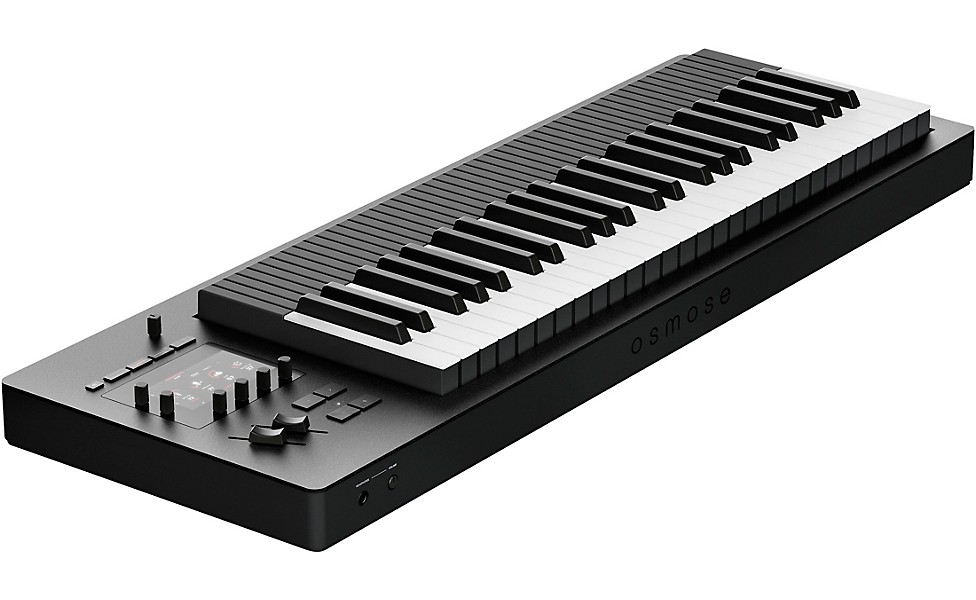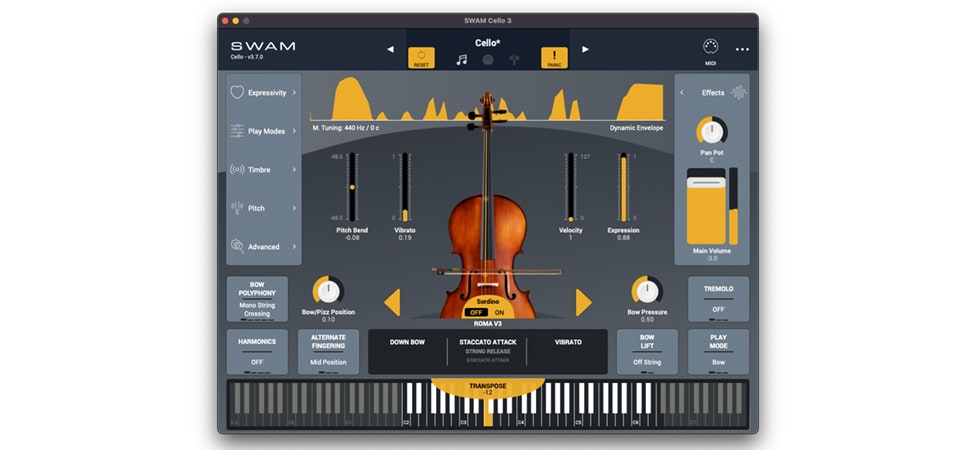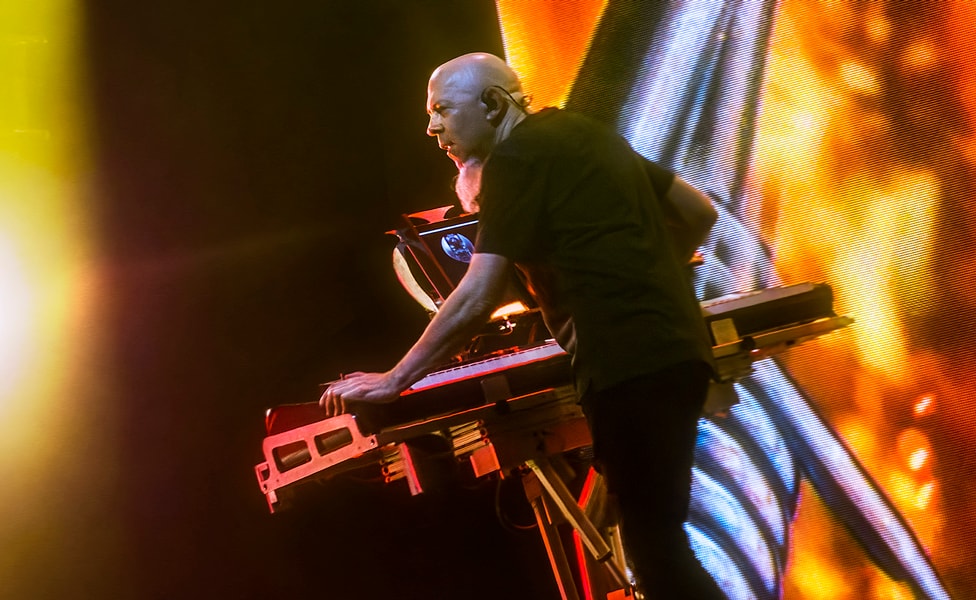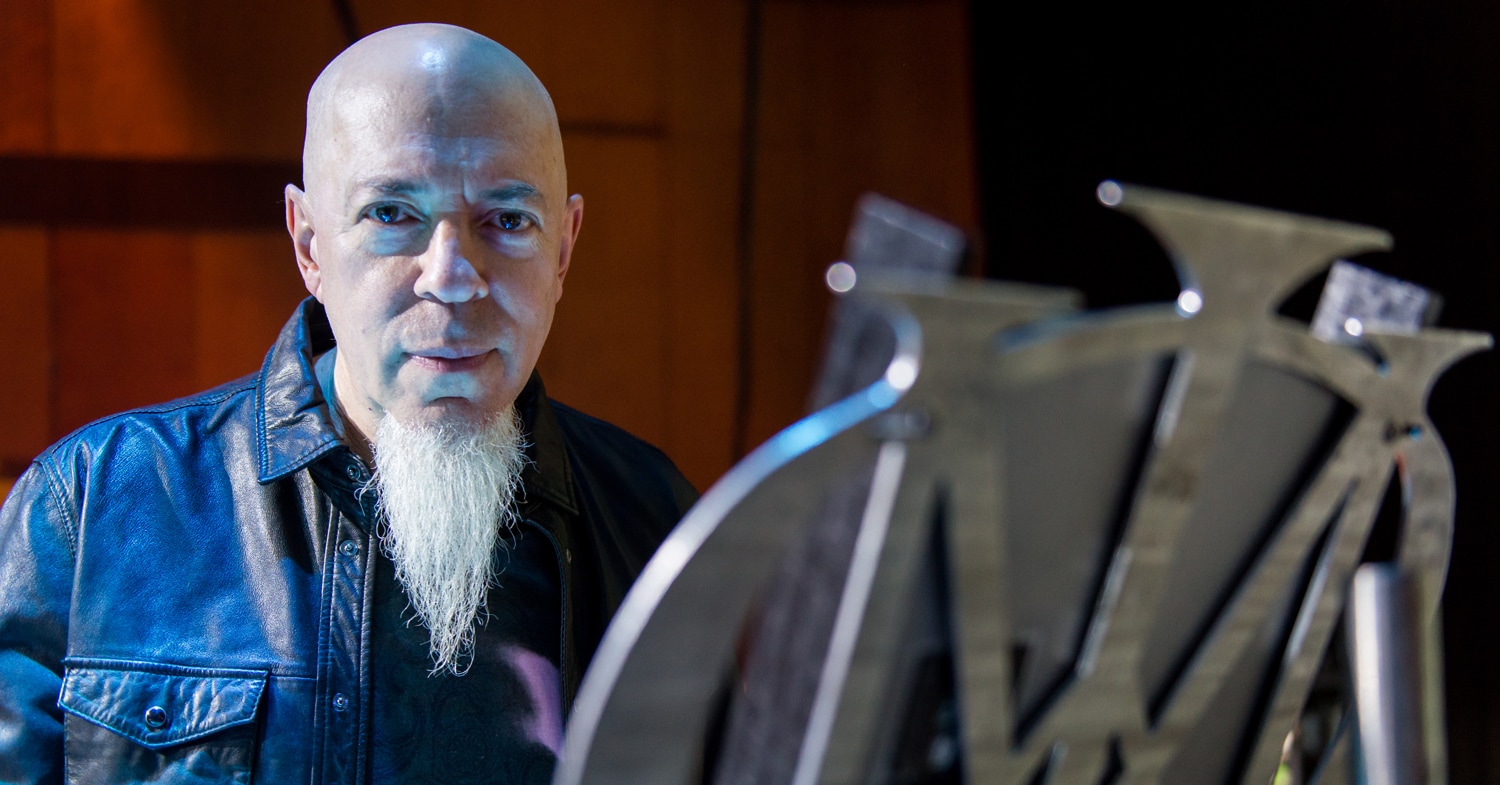(Photo by Darko Boehringer)
Throughout his acclaimed, decades-long career, Dream Theater keyboardist Jordan Rudess has been a fearless pusher of envelopes and advocate of enhanced expression for keyboard players. As a sonic designer, musical futurist and conceptual dreamer, he has built his own successful iOS app company, and guided technologies and products by ROLI, Expressive E and Audio Modeling.
Rudess treated like-minded musicians to a deep dive on one of these groundbreaking endeavors when he recently presented a demo of Audio Modeling’s SWAM technology at the West L.A. Guitar Center. In this exclusive interview, Rudess divulges his commitment to expressive strategies, physical modeling and other technologies that impact and expand the creativity of keyboard players.
Could you tell us how you came to know about SWAM?
Jordan Rudess: Let's see. How did I come upon it? Well, years ago, I met Simone Capitani, who is the product manager at Audio Modeling, and I've been following his path, and he has been following mine. Through my relationship with Simone, I was kind of led to be aware of the SWAM stuff—which I also came across when I started to work for ROLI as a consultant some years ago. Now, it’s a big part of my scene. For my iOS app company, we use SWAM instruments in the apps we make.
While many have known you as a KORG OASYS and KRONOS player, you’ve also been on a path with ROLI, the Expressive E Osmose and the SWAM technology you demoed this evening to dial in alternate forms of keyboard-friendly expressiveness that give players a different way to articulate sound. Were you always interested in this kind of expressiveness, or did a switch go off when you felt the technology was ready?
Well, I had one of the original iPhones when they first came out, and it really didn’t do much of anything in the sound or visual space back then. But I would still sit around playing with a ridiculous sine wave, imagining what might happen if your fingers could be independent on the touchscreen. For me, it was like the beginning of what they call MPE—or MIDI Polpyhonic Expression—where every finger has its own controls. One finger could pitch-bend different directions at the same time another could bend one note as you're playing it, and so on.
So, about 14 or 15 years ago, I came out with an app called MorphWiz, that was like a predecessor to all these instruments we have nowadays. Because, literally, you could put your finger down on the playing surface, and you could bend one note up and bend one note down—which was unheard of at the time with keyboards. That really got me started. It was the beginning of the whole thing.
Not long after that, I discovered Lippold Haken and the Haken Audio Continuum Fingerboard. As a matter of fact, somebody said, “You would really like this instrument. You’ve got to check it out.” So, I checked it out. I reached out to Lippold, and we worked together on it a bit. For example, one of the things about instruments that do all the sliding is that you don't want to play them out of tune, right? But the guys who make these instruments are sometimes coming from a more academic place, and not thinking about how to perform with them. So, I worked with Lippold on the rounding intelligence. I made some suggestions, and he was great. He basically followed through. So, that was the first hardware instrument that was part of this new expressive world. From there, I've been totally involved, and really interested in everything from the ROLI Seaboard to the new Osmose—which is really exciting and incredible.

Pictured: Expressive E Osmose 49 49-Key Polyphonic Synthesizer
Do these instruments change your approach to music?
Absolutely. These instruments definitely make you think differently about the music you're making. They lend themselves toward different kinds of things. For example, I’ve only had an Osmose for a couple of months, and I'm already seeing that you can do special, super musical things with it. The ROLI Seaboard was similar. You put your hands down on it, start playing and go, “Wow, I can do different kinds of things on this instrument.” I love that these instruments open the doors of creativity.
The other part of it is that we've come so far from the days when people would say these types of instruments aren’t expressive. Now, they're amazingly expressive. Maybe more so than anything in the acoustic world.
Do you ever get looks from bandmates—like, “Hey, what the heck is he doing?”—when you use these kinds of instruments?
I honestly haven't pushed that side of what I do that much in Dream Theater. When [drummer, co-founder] Mike Portnoy was in the band, he was kind of interested in all these wacky things I did. I think I used a Continuum Fingerboard on Octavarium [2005], and I also used the ROLI Seaboard a little bit on a couple of other albums here or there. But, in a lot of ways, the Dream Theater music space—as wide as it is—isn't necessarily a place for a lot of subtle, bendy-motion keyboard sounds. Instead, I tend to use them on other projects.
When you started working with the Audio Modeling team on SWAM, did anything jump out as being particularly special?
The physical modeling is incredible. Most people don’t even know it exists. You have to turn them on to it, and then they go, “Wow. It’s amazing.”
It's interesting that physical modeling has been around for such a long time, and it’s in a lot of products. Early on, the models weren’t that realistic, but companies were offering these technologies because it was cool stuff. It reminds me of the Yamaha VL1, which was the original physical-modeling instrument in the early ’90s. It was really cool, but then it kind of went away.
What’s going on now, is you have people making models of real instruments, and doing it so well. Physical modeling is tough. It's really hard to not only make the model, but also control it in musical ways. It's hard to figure out how to offer musical parameters. It takes a certain kind of programming mindset to do all of that stuff.

Pictured: Audio Modeling SWAM Cello
That's that academic versus musician dichotomy you were talking about earlier, right?
Yeah. For GeoShred—which is my app that uses physical modeling—we had to go through a lot of back-and-forth to get parameters that were musical.
One of the things that struck me about your demo was how quickly it loaded, because you're not loading up samples. In the context of performance, that's a whole lot easier, because you’re not worried about lugging around hard drives, mapping samples and all that. It seemed very straightforward, as compared to using a sample library.
The physical models are smaller in size than samples. Also, the ones we played today are monophonic. You can't play any chords with them—at least until they develop that feature. It's pretty crazy this technology exists, and people are still finding out about it. It's like the best-kept secret.
Your SWAM demo revealed how modeling brings performance nuances—such as breaths and noises—that you don’t really get with sample-based libraries. One of our team members turned to me during your demo and said, “Oh, wow, I can really hear that air in there.”
Because the modeling is continuous, every dynamic is all connected—just like an acoustic instrument. The modeling has an organic thing about it, because it kind of is.

Photo: Jerry Lofaro
As you look to the future, what advances are you looking for in modeling?
Even though modeling has been around for a long time, it's kind of getting going again, and, as a result, I think the models are just going to get better and better. Physical modeling is not going away. For example, a guy who is working for me at GeoShred is doing ethnic music models—things like the Chinese Erhu—and they're awesome. The next stage will probably be figuring out how to make it polyphonic. That's important, because you want to play chords.
What’s coming up for you?
I’m getting ready to head out with Dream Theater for Dreamsonic 2023—our prog-metal music festival—with Animals as Leaders and Devin Townsend. It will be really cool. It's going to be fun.










